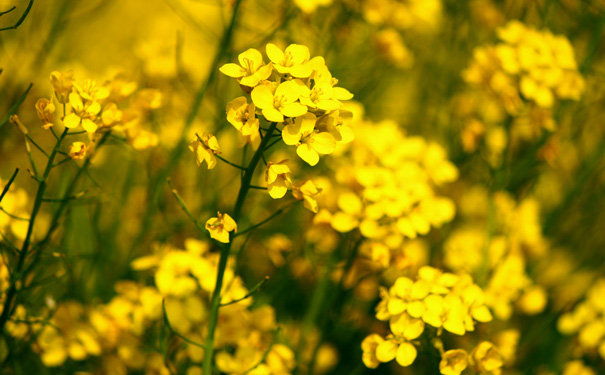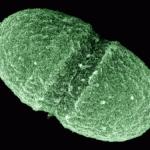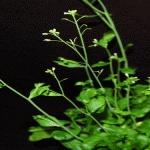
Mustard plants produce glucosinolate to repel bugs. Image: Shutterstock
Mustard plants have developed a defense mechanism against insects.
Many people instinctively reach for a can of insecticide to eliminate a pest, but unlike our panic stricken reactions, nature has its own methods for dealing with bugs. Researchers at Duke University have identified the individual gene in wild mustard plants that produce a chemical defence against insects. Its spicy characteristic acts as an insect repellent, which varies specifically to where the plant flourishes.
Duke Institute for Genome Sciences and Policy‘s biology professor Thomas Mitchell-Olds and his team chose the wild mustard Boechera stricta found in the US Rocky Mountains as their choice of study due to its close relationship with the laboratory plant Arabidopsis. Their mustard plant preference was ideal because it lives in areas untouched and unchanged for the last 3,000 years. This technical advantage offered the researchers a better historical understanding of the plant’s evolutionary process.
“Our results emphasise that natural genetic polymorphisms provide extensive variation for ecologically important traits in natural populations, as well as in agriculture,” explains Mitchell-Olds. “We can expect that many other species in nature could show similar patterns, where the environmental context causes natural selection, which influences variation at the molecular level.”
Using information on the plant’s genome provided by the Joint Genome Institute of the Department of Energy, they identified the specific gene that controlled the variation in chemistry and insect herbivory (insects feeding on plant tissues or plant products, including collecting pollen, nectar or plant resin). The process of quantitative trait locus mapping was used and it involves crossing two parental genotypes together to obtain a first and second progeny. They then examined some 200 DNA polymorphisms (natural variations in a gene, DNA sequence or chromosome) across the genome and selected the ones that were highly correlated with the variation in chemistry and herbivore resistance.
The researchers identified a narrow chromosomal interval containing the gene encoding an enzyme responsible for the first step in producing the plant’s glucosinolate chemical compounds — the same chemical that give the plant its characteristic spiciness.
Consequently, their study has recognised that a slight difference in two amino acids in the spicy enzyme alters the production of a different defensive chemical — it is this difference the on a that determines the life and death for the mustard plants. Plants carrying the version of the enzyme normally found in Colorado were planted in Montana, only to be attacked and destroyed by insects. Similarly, Montana plants were overtaken by bugs when grown in Colorado.
The result of this study can be applied to mustard plants in Australia. Since the research highlighted that the difference in chemical compounds were subjective to insect resistance, Mitchell-Olds hypothesised that “Australian mustard plants show variation in these spicy glucosinolate chemicals, which may have important effects on insect resistance.”
Ultimately, the variation in the wild mustard plants’ chemical defenses against insects determines its survival and reproductive success. “Plant defense against insect enemies is greatly influenced by the environmental context and the particular insect species that attack them,” stated Mitchell-Olds. “Interdisciplinary analyses of ecological or agricultural variation can now combine studies of plants in complex environments as well as the molecular and biochemical mechanisms that control fitness or yield. These studies require interdisciplinary teams with a broad range of expertise.”
Source: IGSP






